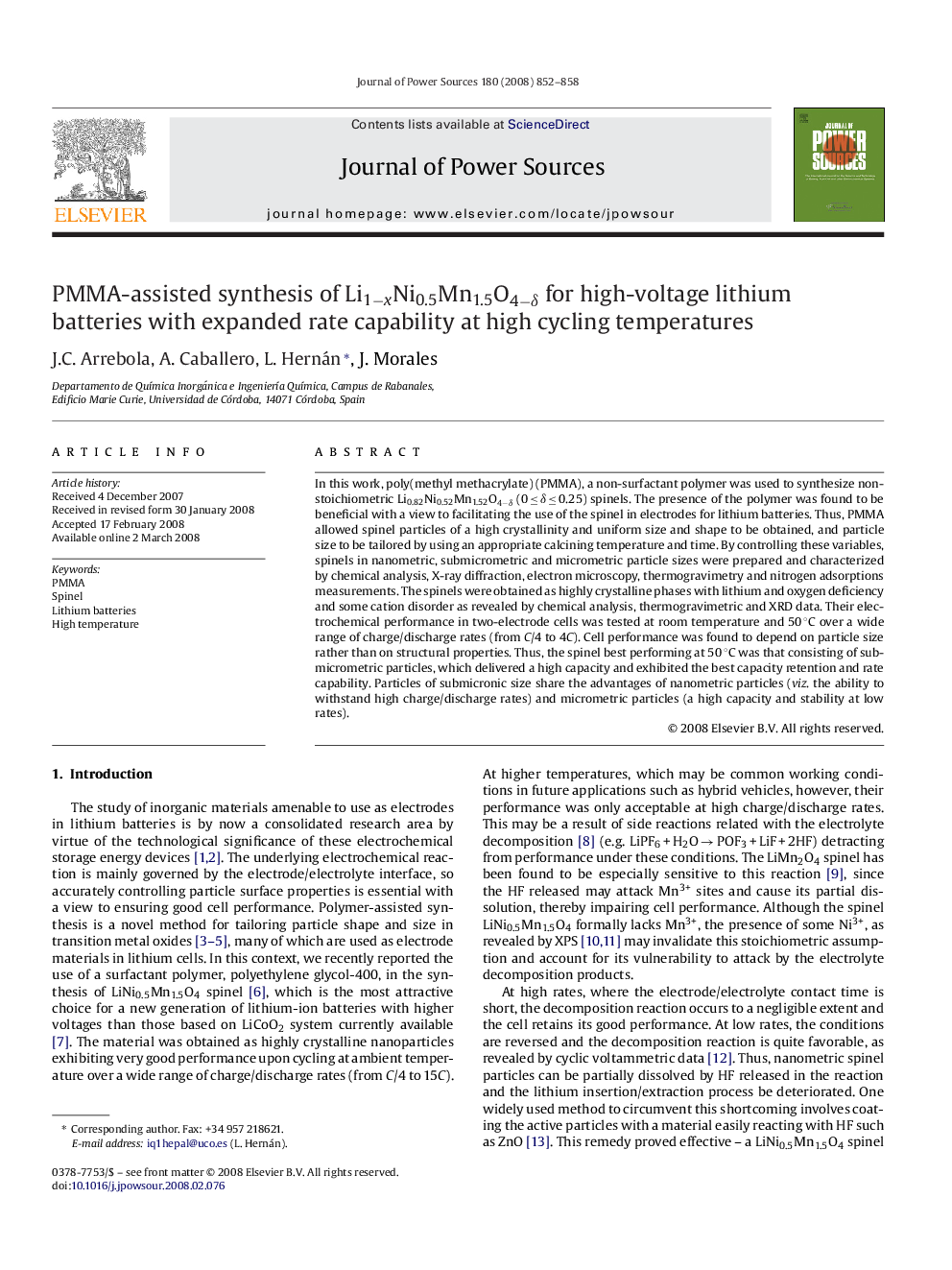| Article ID | Journal | Published Year | Pages | File Type |
|---|---|---|---|---|
| 1290475 | Journal of Power Sources | 2008 | 7 Pages |
In this work, poly(methyl methacrylate) (PMMA), a non-surfactant polymer was used to synthesize nonstoichiometric Li0.82Ni0.52Mn1.52O4−δ (0 ≤ δ ≤ 0.25) spinels. The presence of the polymer was found to be beneficial with a view to facilitating the use of the spinel in electrodes for lithium batteries. Thus, PMMA allowed spinel particles of a high crystallinity and uniform size and shape to be obtained, and particle size to be tailored by using an appropriate calcining temperature and time. By controlling these variables, spinels in nanometric, submicrometric and micrometric particle sizes were prepared and characterized by chemical analysis, X-ray diffraction, electron microscopy, thermogravimetry and nitrogen adsorptions measurements. The spinels were obtained as highly crystalline phases with lithium and oxygen deficiency and some cation disorder as revealed by chemical analysis, thermogravimetric and XRD data. Their electrochemical performance in two-electrode cells was tested at room temperature and 50 °C over a wide range of charge/discharge rates (from C/4 to 4C). Cell performance was found to depend on particle size rather than on structural properties. Thus, the spinel best performing at 50 °C was that consisting of submicrometric particles, which delivered a high capacity and exhibited the best capacity retention and rate capability. Particles of submicronic size share the advantages of nanometric particles (viz. the ability to withstand high charge/discharge rates) and micrometric particles (a high capacity and stability at low rates).
